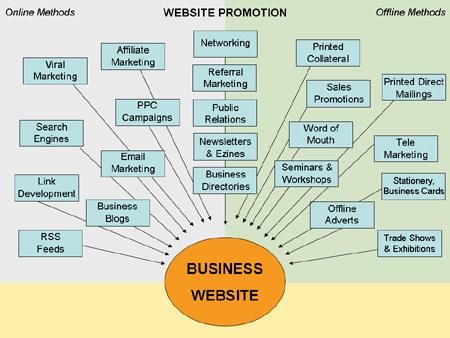Concern for our planet is skyrocketing. Growing environmental awareness has pushed individuals to seek eco-friendly options that lessen their impact. Modern consumers are savvy and informed, demanding transparency and strategic green initiatives from businesses. Simply slapping an “eco-friendly” label on a product no longer suffices. Eco-conscious consumers expect businesses to demonstrate genuine responsibility and action toward sustainability.
To thrive in today’s marketplace, companies must embrace a green mindset. As we consider the well-being of future generations, more people gravitate towards eco-friendly products from sustainable brands. This shift is largely driven by social responsibility and ethical considerations. Sustainable living necessitates considering the environment and one’s impact on it, placing companies under intense scrutiny.
The urgent need to combat climate change, conserve natural resources, and reduce pollution has fundamentally reshaped how businesses approach marketing and customer engagement.
This guide delves into the core principles of green marketing, its evolution, and strategic steps for building a resilient and responsible brand. We’ll explore the benefits and potential challenges, equipping you to navigate any situation.
Join us as we uncover the path to reshaping the business landscape for a brighter, more sustainable future.
What is Green Marketing?
Green marketing, also known as sustainable or environmental marketing, promotes products and services based on environmental initiatives. It showcases a company’s dedication to environmental responsibility. This strategy encompasses developing and promoting environmentally friendly products while cultivating a sustainable brand image.
Green marketing encourages consumers to make sustainable choices, creating a positive environmental impact. Its scope includes:
- Product Development: Creating products with minimal environmental impact using sustainable materials and energy-efficient practices.
- Marketing Strategies: Employing advertising, product packaging, and branding that highlight a product’s environmental benefits.
- Supply Chain Management: Minimizing the ecological footprint by optimizing supply chain operations, reducing waste, and adopting sustainable business practices.
- Corporate Social Responsibility: Embracing environmentally responsible practices and policies to build a reputation for environmental stewardship.
- Consumer Education: Informing consumers about the environmental impact of their choices and empowering them to make sustainable decisions.
The Evolution of Green Marketing
Green marketing has evolved alongside changing consumer attitudes, regulatory developments, and environmental challenges. Here’s a brief timeline:
1970s: The Emergence: Green marketing emerged as environmental awareness grew. Concerns about pollution and resource depletion spurred interest in eco-friendly practices. Early efforts focused on eco-friendly products and basic labeling.
1980s-1990s: Skepticism and Greenwashing: The rise of “greenwashing,” where companies made false or exaggerated environmental claims, led to skepticism and calls for stricter standards and transparency.
2000s: Maturation and Regulation: Green marketing matured, with regulations implemented to ensure the validity of environmental claims. Certifications like Energy Star, Fair Trade, and organic labels gained prominence.
2010s: Mainstream Adoption: Environmental consciousness among consumers drove demand for sustainable products. Businesses recognized the value of sustainability, integrating it into their marketing and social responsibility initiatives.
Present and Beyond: Green marketing now encompasses a broader perspective, including social and ethical concerns. It’s an integral part of sustainable business practices.
 A hand holding a small plant with an electric plug coming out of it, against a green background.
A hand holding a small plant with an electric plug coming out of it, against a green background.
Benefits of Green Marketing for Businesses
Green marketing offers numerous advantages for businesses dedicated to sustainable practices.
Positive Brand Image: Green marketing campaigns foster a positive brand image and boost awareness. Commitment to sustainability resonates with consumers who value eco-friendly products and responsible businesses, leading to trust, customer satisfaction, and a strong market presence.
Competitive Advantage: Sustainable products and services stand out in a crowded marketplace. Consumers often choose products aligned with their values, giving eco-conscious companies an edge in attracting and retaining customers.
Consumer Trust and Loyalty: Green practices build long-term consumer trust and loyalty. Transparent communication about sustainable practices and genuine commitment to eco-friendly materials foster trust, leading to repeat purchases, positive word-of-mouth, and brand loyalty.
Regulatory Compliance: Green marketing helps businesses comply with increasingly strict environmental regulations and standards for eco-labeling and claims, avoiding legal issues, penalties, and reputational damage.
Strategies for Effective Green Marketing
Let’s explore effective strategies for implementing green marketing:
Eco-Friendly Product Design: Develop products with a reduced environmental impact using sustainable materials, enhancing energy efficiency, or enabling recycling or repurposing.
Innovation for Sustainability: Invest in research and development of eco-friendly production processes and technologies.
Sustainable Packaging: Reduce packaging, utilize recyclable or biodegradable materials, and explore packaging-free options. Display eco-labels and certifications prominently.
Eco-Friendly Supply Chain: Collaborate with suppliers adhering to sustainable and ethical sourcing standards. Optimize the supply chain for energy efficiency.
Green Advertising and Communication: Employ honest and transparent communication about environmental efforts. Avoid greenwashing. Focus on storytelling to connect with consumers. Launch educational campaigns about environmentally friendly materials and practices.
Green Partnerships and Collaborations: Partner with environmental organizations or like-minded businesses to launch joint initiatives and marketing campaigns that promote sustainable consumer behavior.
By implementing these strategies, businesses can satisfy eco-conscious consumers and contribute to a more sustainable future.
Challenges and Solutions in Green Marketing
While advantageous, green marketing presents challenges that businesses must address:
Greenwashing Risks
Challenge: Companies making false or misleading environmental claims damage the credibility of genuine efforts.
Solution: Be transparent and honest about your environmental impact. Provide verifiable evidence to support claims. Seek independent verification to build credibility. Use specific, measurable data and avoid sweeping statements.
Overcoming Consumer Skepticism
Challenge: Past instances of greenwashing have made consumers skeptical of sustainability claims.
Solution: Educate consumers about your sustainability initiatives to empower them to make informed choices. Clearly communicate environmental benefits. Engage in open dialogue and address concerns through social media and other channels.
Regulatory Compliance Challenges
Challenge: Navigating evolving environmental regulations, which often vary by region, can be complex.
Solution: Stay informed about local, national, and international regulations affecting your industry. Join industry associations for guidance and updates. Consult with environmental experts or legal professionals to ensure compliance.
Technology and Green Marketing
Challenge: Keeping pace with rapidly evolving green technologies and managing the costs of implementation can be demanding.
Solution: Invest in R&D to stay abreast of eco-friendly technologies. Conduct a cost-benefit analysis of green technologies, recognizing that sustainable practices can lead to long-term cost savings.
Implementing Green Marketing: A Step-by-Step Guide
Let’s outline practical steps to implement green marketing successfully:
Assess Environmental Impact: Evaluate your business’s current environmental footprint, including operations, products, and supply chain. Identify areas for improvement and existing strengths.
Set Green Goals and Objectives: Define clear, measurable, and time-bound sustainability goals aligned with your business values and target audience’s expectations.
Employee Engagement and Training: Educate and engage employees about your sustainability initiatives. Provide training to empower them to make eco-conscious decisions in their roles.
Transparent Communication: Communicate your sustainability efforts honestly and transparently across all channels, using compelling storytelling and providing verifiable data.
Continuous Improvement: Regularly monitor and measure the impact of your green marketing initiatives using KPIs. Adapt your strategies based on data and feedback.
 A lightbulb with a plant growing out the top against a green background.
A lightbulb with a plant growing out the top against a green background.
Future Trends in Green Marketing
The landscape of green marketing is constantly evolving. Here are some key trends to watch:
Technology Integration: Artificial intelligence, data analytics, and other technologies will play a crucial role in tracking environmental data, personalizing communication, and optimizing sustainability efforts.
Global Collaboration for Sustainability: Collaboration among businesses, governments, and NGOs will be essential to address global environmental challenges.
Evolving Consumer Expectations: Consumers are becoming increasingly discerning and demanding greater transparency, authenticity, and action from businesses.
Conclusion: Embrace the Future of Sustainable Business
Green marketing is no longer a trend—it’s an integral aspect of responsible business. By embracing environmental responsibility, businesses can align with conscious consumers, enhance brand reputation, and contribute to a healthier planet. By integrating technology, fostering collaboration, and adapting to evolving expectations, companies can ensure their sustainability efforts make a tangible difference.


